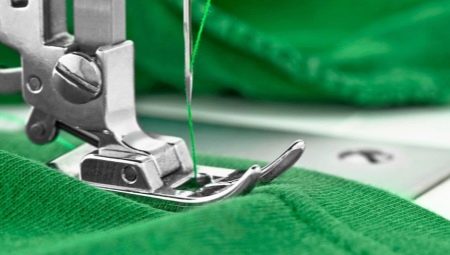In the process of working with the sewing machine, it happens that the bottom thread of the seam begins to loop. The most common cause of this malfunction is a loose thread. The line becomes uneven in the bottom row, which, as it may seem, is due to the bottom thread, but do not be mistaken. The cause of the loop is the upper thread, and if you pull it by all the rules, the undesirable phenomenon should disappear.
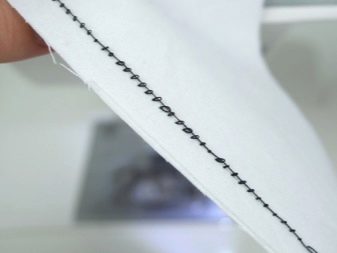
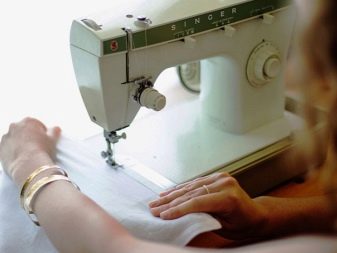
That's just to solve the problem so simply does not always work out, and the action taken may not give positive results. Let's find out why a sewing machine sews with loops, what is the root cause of this effect and how to fix such a problem.

Causes
The key point at which the seam begins to loop is improper thread tension. Often, the upper thread winds around, and therefore loops arise from the bottom of the seam. In this situation, you can try to increase the thread tension. If the malfunction disappears, therefore, from the very beginning, the wrong settings were simply selected. If no changes have occurred, a deeper adjustment is required. Usually, the shuttle is being debugged to fix the problem.
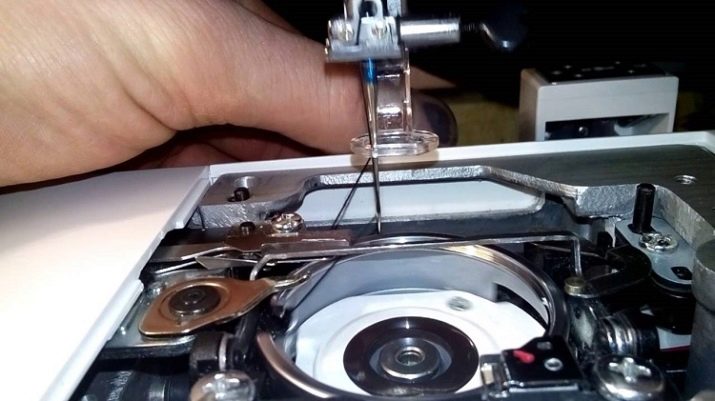
Looping of the lower thread is much less common, but adjusting its tension is more problematic. A loop appears if the thread is not fully retracted into the stitch. The reasons for this can be very different. Some of them are elementary and quickly removable, others require thorough intervention.
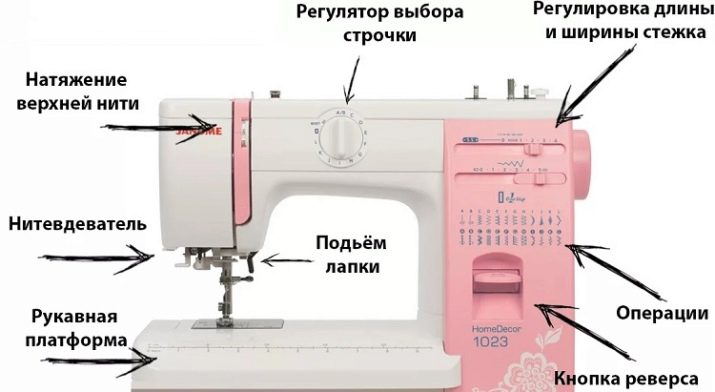
The most common causes of constant or periodic looping of a seam are the following.
- "Slowing down" in the process of moving the thread in the stitch. Regular maintenance and timely cleaning of the machine allows you to insure against this trouble. Slowing down may be due to improper selection of threads. Poor thread quality is one of the main looping factors. This happens due to the fact that when sewing creates an excess of thread, which does not tighten in time, as a result, a loop is formed.
- The hardest part is to uncover the causes of the repeated looping. This trouble can be caused by anything, starting from inaccurate adjustment of the shuttle stroke and ending with minor badasses on the shuttle. Sometimes an experienced specialist may take a long time to discover the causes of such a malfunction. It is almost never possible to solve the problem on our own. The danger of episodic looping lies in its unpredictability. Only now the machine sewed almost flawlessly, and suddenly the seam becomes poor-quality. The regulation of tension in this matter is indispensable, since the reasons are hidden in the device of the machine.
- Reducing the stiffness of the upper thread tensioner spring. During operation, the tensioner spring gradually becomes weaker and is not able to transfer the necessary force to the thread clamping washers (plates, clamping discs). This leads to an excess of thread and, as a result, the appearance of loops. The normal compression / expansion of the spring is also prevented by the clamped axis of the tension regulator. The thread tension almost always changes as a result of the deformation of the spring coils.
- The tensioner plates are not fully clamped or not clamped at all. When raising the presser foot, the clamping discs open, as a result of lowering, they compress and clamp the thread. In individual episodes, compression is not performed, the thread is not stretched. The thread starts to move freely, as a result of which the sewing machine sews loops below. Basically, such a defect is associated with the mechanical wear of the plates, for example, the appearance of rust, warping on their surface, and so on. To resolve the issue, the tensioner module is completely disassembled and configured.
- Incorrect adjustment of the lower thread tension. This problem is common and every time becomes the reason that the lower thread begins to loop. As a rule, it is associated with the desire to adjust the tension of the threads independently. The tension of the lower thread is increased by means of a screw on the bobbin case. The operation is straightforward, but there is a great risk of overdoing it. As a result, the thread tension becomes excessive.
- Scuffs and defects on the surface of the shuttle. Such a problem often appears after a long period of equipment inactivity. Roughnesses, tears, and bumps on the surface of the shuttle create obstacles in the process of moving the thread, as a result, a loop will arise.
If scuffs appear on the bobbin case, you can simply change it and grind it.
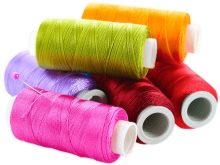
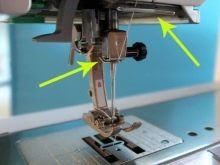

Troubleshooting
As already mentioned, looping occurs, as a rule, due to weak tension of the upper thread or too much tension of the lower thread. In order to adjust the tension of 2 threads, you need to make sure that there are no barriers in their way to the material in the form of scoring, bending, contamination and the like.
When adjusting, remember that weak tension is the cause of a weak seam (while looping may be absent), strong tension is the cause of the frequent breakage of any thread.
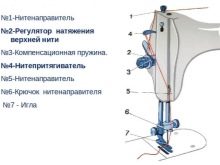
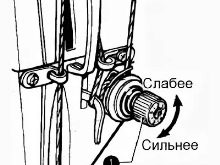
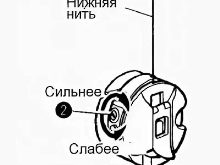
If the problem persists through the thread tension adjusters, you need to look at the presser foot to the plate. To do this, set the needle to its lowest position (so that the comb does not peek out of the needle plate). Use your finger to press on the presser foot and see if the presser foot dangles. If it dangles, this means that the foot in the process of sewing improperly presses the fabric to the needle plate, which prevents both threads from interlacing with each other on the material.
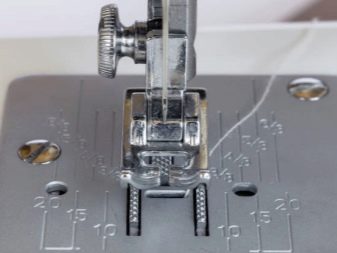
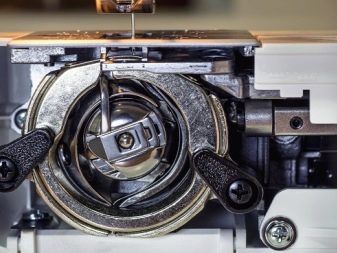
Fixing this crash is very simple. It is necessary to examine the bobbin case and the bobbin itself. To do this, insert it with the threads in the cap, pull the tip of the thread into the slot provided for it, and holding the cap with one hand, slowly stretch the thread with your second hand for 5 centimeters. We carefully monitor whether the bobbin is delayed in the cap during thread pulling. If the bobbin walks in the cap without hindrance, we install the entire kit in the shuttle (bobbin holder), as for the first time, pull the tip of the thread, and carefully monitor the bobbin delays.
If the thread brakes from time to time, this will cause looping. In this situation, remove the needle plate and clean it from below between the teeth of the comb, as well as the set of parts of the shuttle itself. We lubricate everything.
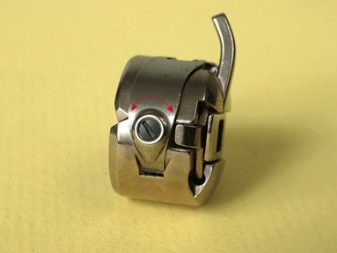
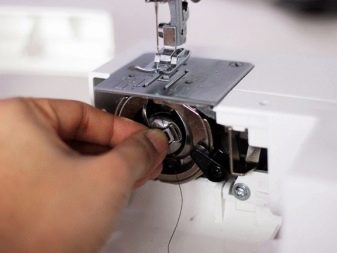
We install the needle plate in place, twist it and prepare the machine for work. We take an unusable rag and run it back and forth for 30 seconds so that the excess oil is gone. Then we begin the regulation of threads again.
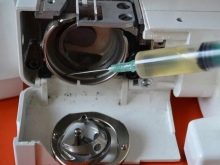
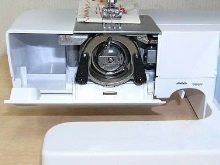

If this also does not work, therefore, the source is deeper and this concerns the machine settings - from the compensation spring to the shuttle malfunctions (this is the simplest) and from the wrong camshaft to main shaft ratio to the knocked down adjustment of the thread feeding mechanism.
In such situations, knowledge of the design of the machine is necessary, so it is worth contacting the installer for help.
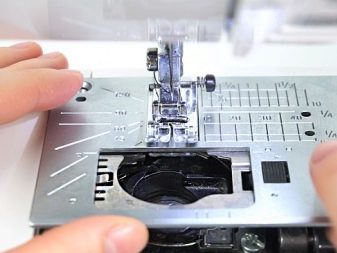
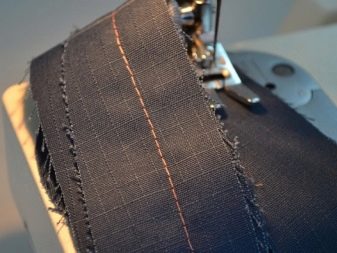
Preventative measures
Often, problems during the sewing process appear due to improper use of the unit and lack of maintenance. It is necessary to adjust the equipment in strict accordance with the documentation of the machine manufacturer. Very important:
- carry out the correct threading of threads;
- keep tension under observation;
- choose threads and needles according to the variety and thickness of the fabric;
- lubricate the machine in due time and eliminate pollution;
- keep it in a dry place out of the reach of children.
Threads and needles must be appropriate for the material being processed. It is contraindicated to sew thick fabric (twill, tarpaulin, jeans and others) with a thin needle, otherwise the product will be damaged.
The thickness of the needle and thread are indicated on the number plate.
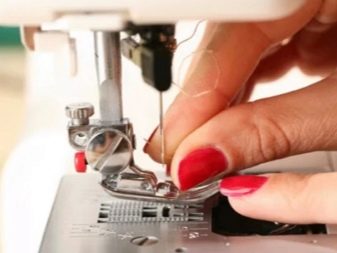
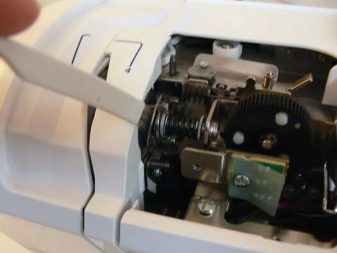
Tips
Before starting work, it is necessary to check how easily the mechanisms move, the fasteners of the components, how easy the threading and the installation of the needle are. It is forbidden to use rusty, bent and blunt needles. First of all, it is desirable to sew test lines on a small piece of cloth, and then take up the manufacture of the product. Cleaning the machine is performed with a soft brush or a napkin.
Get tweezers from hard to reach places will allow tweezers or a needle. It must be monitored so that pile, fragments of threads and dust do not accumulate in the shuttle and other elements of the machine. In order to have access to internal mechanisms, use a screwdriver.

The frequency of lubrication depends on how often the machine is used. With frequent use, it is advisable to lubricate it with specialized oil for sewing machines once a month. When you have to sew infrequently, an ode of grease in 6 months is enough. You can buy accessories and oil for cars in special stores. Serviceability of sewing equipment depends on proper operation and proper maintenance.
In case of operation errors, it is possible to eliminate the defect on your own, in case of serious malfunctions requiring replacement of spare parts, it is necessary to consult a specialist.
See how to adjust the stitch on the sewing machine in the next video.
